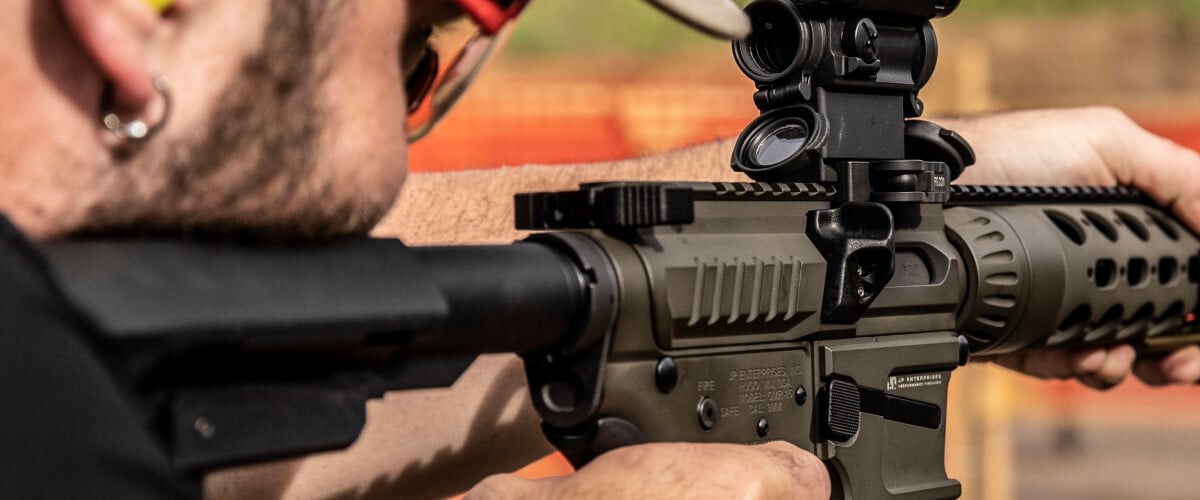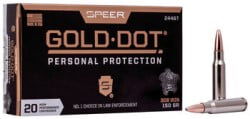
The jolt of recoil, the whims of the breeze, the wobble caused by our own adrenaline-filled bodies—whatever the cause, guns inevitably and unavoidably move on and off target during a shot sequence. But you don’t need to let that movement push you around. Speer ambassador Patrick Kelley identifies some of the main ways firearms move and explains the best ways to beat them.
Kick It
One of the biggest and most dramatic ways in which firearms move is recoil. But it doesn’t have to cost you accuracy or speed. It’s all about balancing energy. As a gun releases energy, you want to be pushing back just enough to mitigate that.
“Not more than—or you’ll push the gun forward. And not less than or the gun will push you,” Kelley says.
Grip is also important, specifically the position of the off hand. Kelley suggests holding a rifle as far out on the fore-end as possible.
“The closer you are to the energy release, the more control you have over it,” he says. “Think of a garden hose. If you hold it three feet from the end with a high-pressure nozzle then turn it on, the nozzle goes everywhere. Hold right at the nozzle, and it doesn’t go anywhere.”

Gold Dot Rifle
Engineered to provide industry-leading performance in FBI protocol testing through barrels less than 16 inches long, Gold Dot Rifle loads are accurate, tough and consistent through all common barriers.
Buy NowBut that’s not enough. You need to apply additional energy to that hose—or a rifle—to keep it from moving off target.
“Unless you add energy at the moment the water leaves, that nozzle is going to lift a little under recoil. Same with your rifle.”
So, Kelley tailors every aspect of his stance and grip to push back, bringing energy from the ground and into the rifle through four points of contact—his shoulder, cheek and both hands.
“You can’t get rid of recoil, but you can control it and you can mitigate it to have your point of aim return to where you started,” Kelley says. “Apply it to your practice routines and you’ll be faster and more accurate through every course of fire.”
Position Practice
Not all movement comes from your rifle’s recoil. Even when shooting with the support of a rest, such as a prop in a competition stage, a hand-held rifle will have a natural wobble—and nothing the shooter does can stop this. The first step to breaking accurate shots despite this is simply practicing shooting from different supported positions, and finding ways to maximize stability from each of them. This is not a one-size-fits-all proposition—shooters of different heights and proportions will need to tailor positions to their unique body mechanics.

Next, with positions perfected, recognize that the movement you see through the reticle is not a random wiggle. Instead, it follows a fairly repetitive, predictable path, which lets you time the shot to break the instant the sights pass across the target.
But the size of that wobble zone and the path it follows depends greatly on the shooter’s position.
“Sometimes you’ll see movement that’s horizontal, small and circular or virtually non-existent,” Kelley says. “The takeaway is that you need to be comfortable with your reticle movement in different positions.”